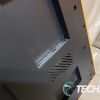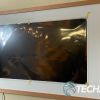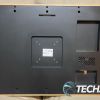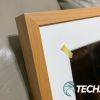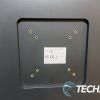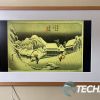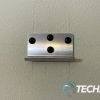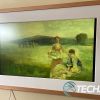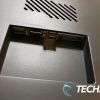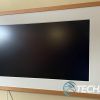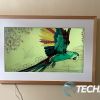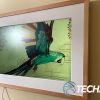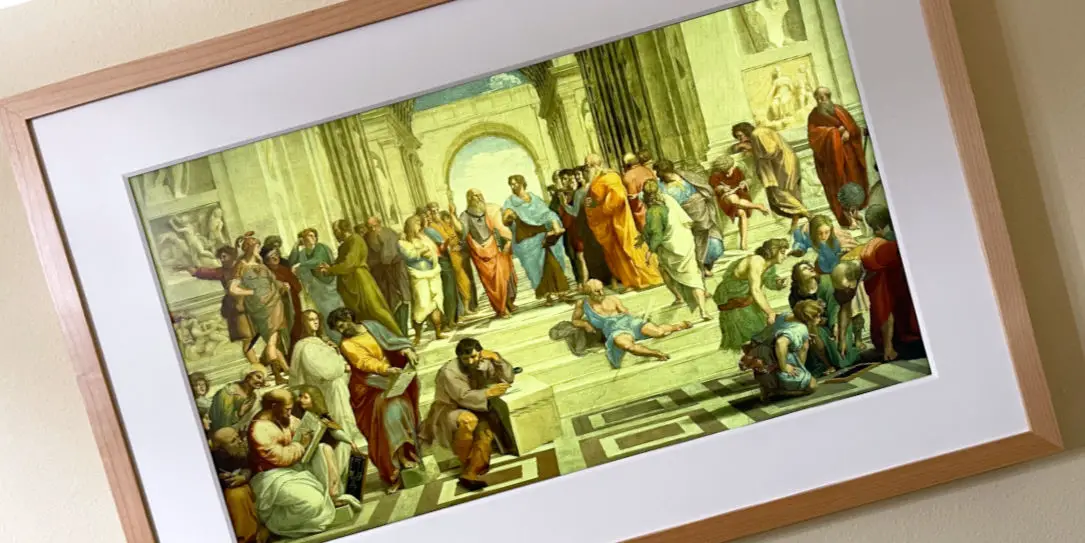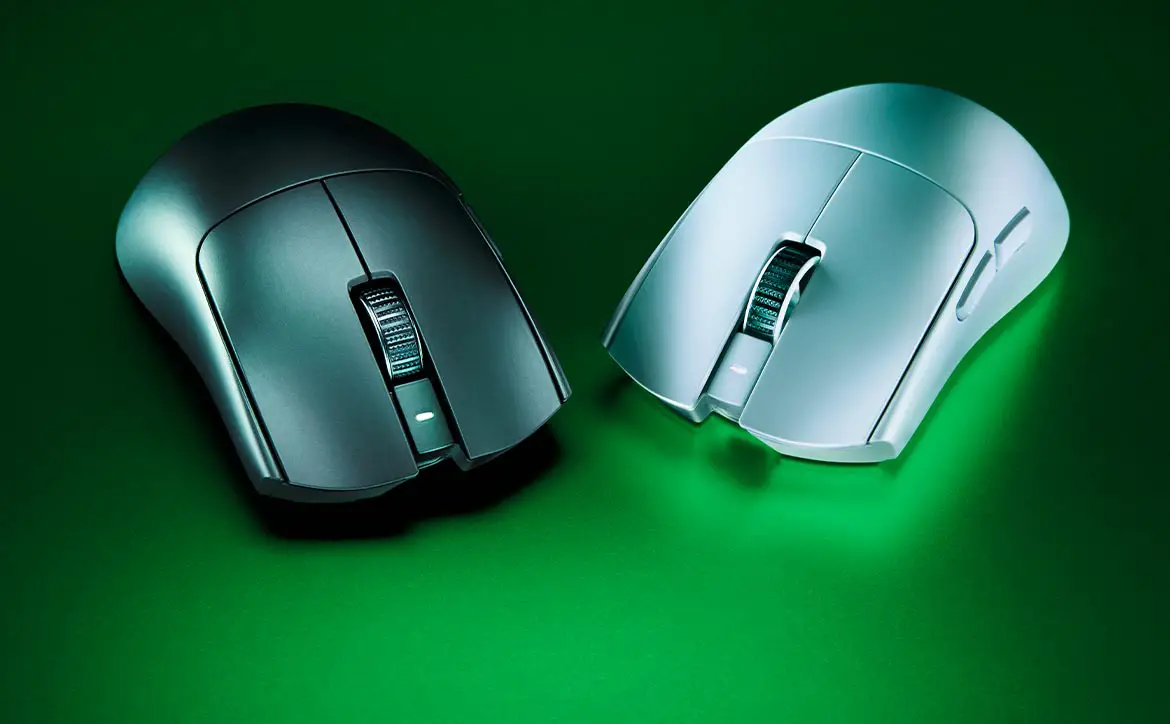
The digital art frame is very new on the market, but it’s catching on with many users. These gadgets allow users to display various artwork or even personal photos making them versatile and adaptive. The Canvia is one of the latest digital art frame devices on the market, and it is an excellent option for users looking for such a device.
The company has done an excellent job of curating a nice array of artwork and making it possible to upload your own images from your smartphone. While a digital art frame isn’t on everyone’s wish list, we’re confident that Canvia will appeal to those wishing for such a gadget. Read on for the full review of the Canvia digital art frame.
Specifications
The Canvia digital art frame has the following features and specifications:
- 1.8 GHz Quad Core ARM Processor; 2GB DDR3 RAM
- WiFi: 802.11a/b/g/n/ac (supports both 2.1 GHz & 5GHz)
- 16GB of storage (up to 10K artworks or images)
- 1920 x 1080 FHD resolution
- Advanced High-Performance Monitor
- AntiGlare
- iOS & Android support
- Easily upload & schedule your own photography
- Dimensions:
- Width: 27″
- Height: 18″
- Depth: 1.6″
What’s In The Box
- Canvia digital art frame
- Power Cable
- Wall Mount
- Manual and Documentation
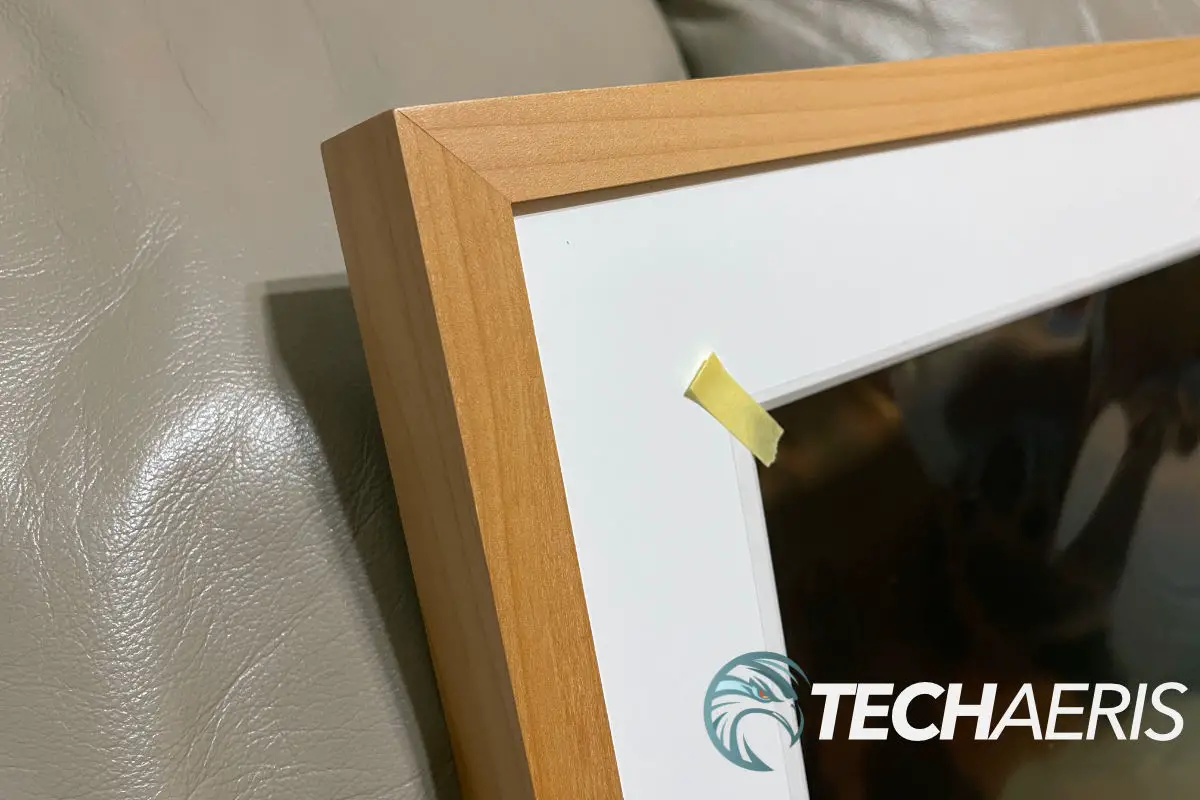
Design
The Canvia digital art frame is designed to look like an art frame, and it accomplishes that task very well. Our wood grain version has a blonde wood frame and white inner matte around the display; this mimics the look of an actual framed work of art. You can also order the wood in cherry, black, and white.
There are two orientations you can mount Canvia, portrait, and landscape. I chose to mount it in landscape mode but keep in mind that artwork that’s not in your chosen orientation will not display with black bars on the sides or top and bottom.
On the back, you can find a serial port and two USB-A ports for connectivity, should you need it. The power port is also on the back, and the power brick and adapter are fairly large. We would suggest you find a way to hide the cable in the wall. We chose to leave the cable hanging and secured the adapter behind the frame. This method doesn’t look the cleanest, but it’s convenient if the Canvia needs to be moved.
The frame itself is made of high-quality wood, and the rest of the plastics and the display itself all feel very premium. The company made all the versions of Canvia very neutral, giving it great versatility in matching any decor.
Overall, the Canvia digital art frame design is premium, and the materials used are high-quality. The aesthetic is neutral, giving users many options to incorporate Canvia into their homes.
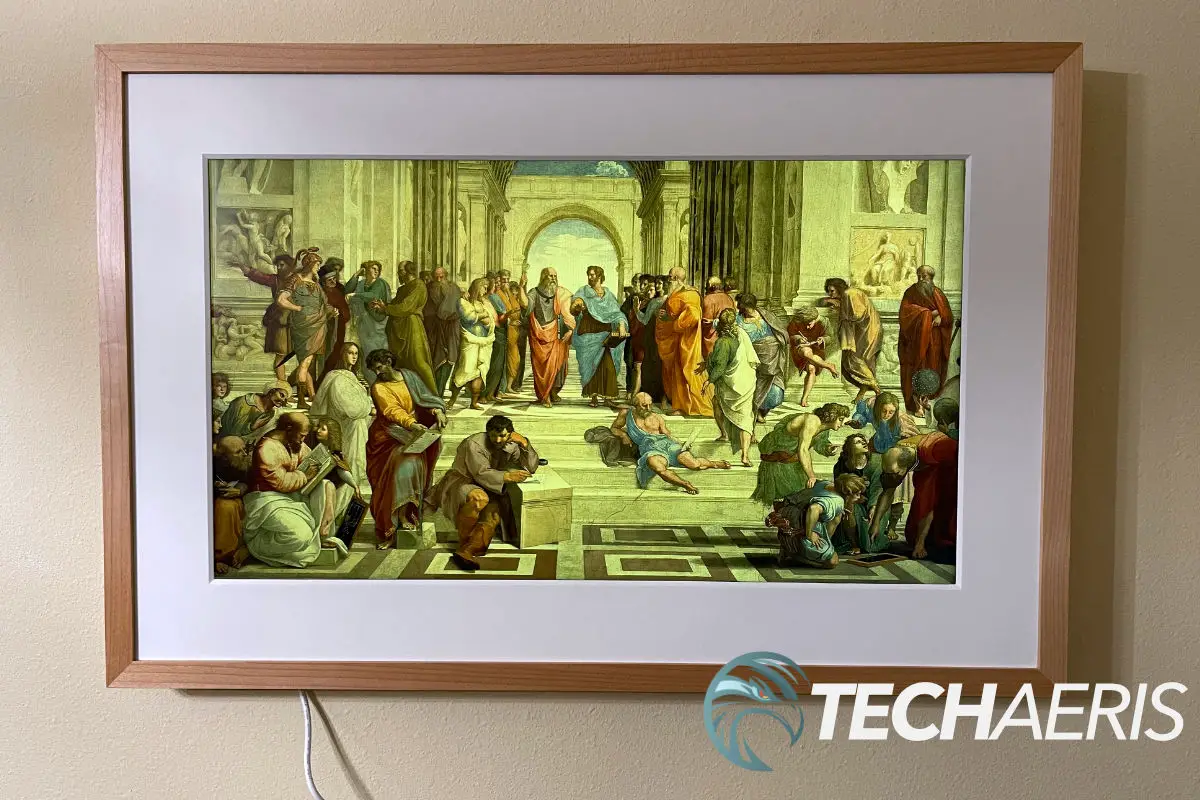
Display
The Canvia display is full HD with a resolution of 1920×1080. We think Full HD is a great resolution for this application. It displays all artwork cleanly and crisply as well as photos. The company doesn’t give any specifics about who makes the panel or provide many other specifications.
Colors are bright but not oversaturated or punchy, leading me to believe this is an LCD panel. While the colors aren’t punchy, they’re pleasing to the eye and look true to life. Blacks are decent, not as deep as an OLED or QLED TV, but they are acceptable for this application. Brightness is good and controlled in the app; you can go really bright or back it down. We preferred to back the brightness down. This makes the artwork look more like a real painting than having it at full brightness.
Overall, we think colors are represented fairly accurately, and blacks are excellent for a panel of this caliber. The artwork and photos being displayed look great and pop nicely.
Setup
Setting the Canvia digital art frame-up is fairly easy. We used the included wall mount and made sure to find a stud for the strongest hold. Canvia is not very light, so we recommend mounting it to a stud. We opted to mount it in the landscape configuration, but you can mount it in portrait as well. We also opted not to hide wiring behind the wall as we may want to move this in the future. It’s not as clean-looking, leaving the cable exposed, but we’re fine with it.
If you plan on running the power cable behind the wall, you can use something like the Legrand in-wall TV power kit that you can find on Amazon.
Once you have, it mounted you can download the app and plug the frame in. Then follow the instructions on display to connect. The display will use your Wi-Fi network, but first, you need to connect to its hotspot, which will allow the frame to connect to your network.
Once you have the app downloaded and have created an account, and connected the frame to your network, you’re about done and ready to use the app to choose your artwork and photos you want to display.
Overall, the setup is simple and easy to get through. Mounting Canvia is simple and only requires a few tools like a drill, level, and screwdriver.
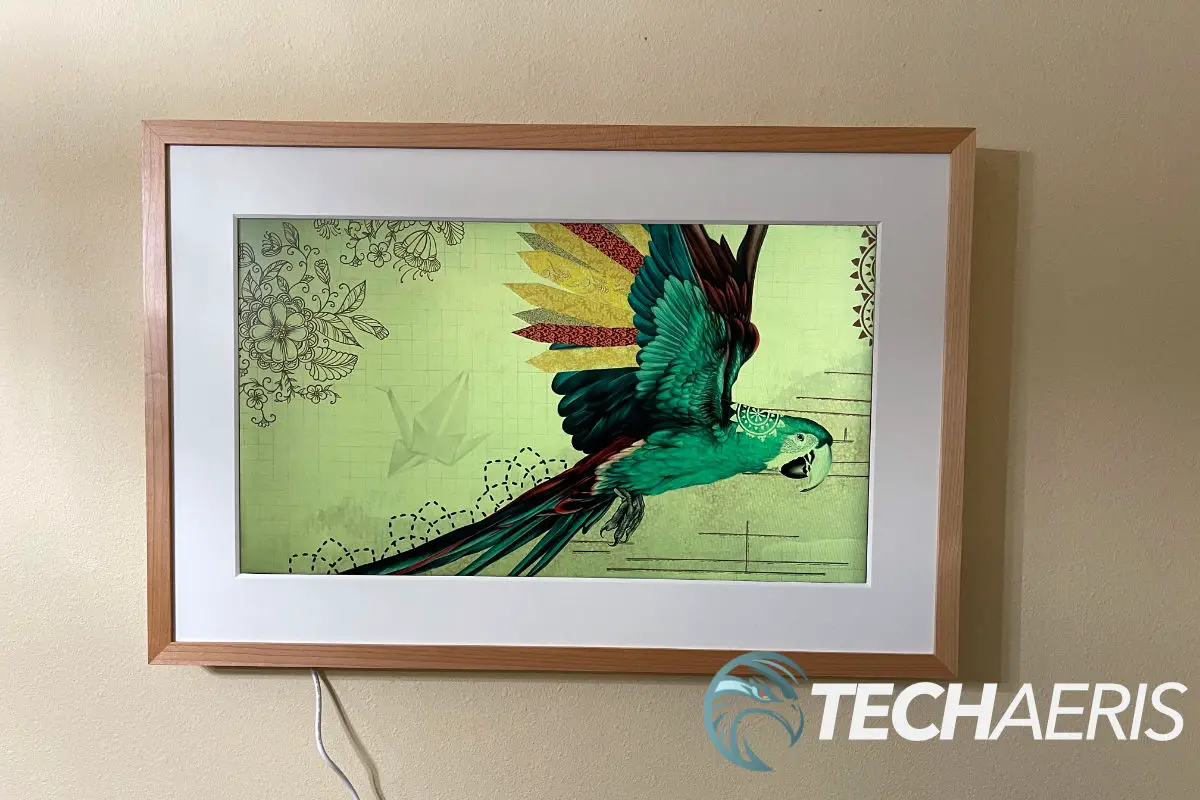
Software
Canvia comes with an iOS/Android app and also has a web interface. The app is key in setting up the frame, and set up is fairly straight forward and easy.
The app is also the place to tweak the frame’s settings such as:
- Brightness Control: Set the brightness to your liking
- ArtSense: Adjust the ArtSense feature for brighter or dimmer conditions
- Equalization: Helps to adjust characteristics of images
- Status: Wake or Sleep your Canvia
- Orientation: Change from landscape to portrait
- Playback Duration: Choose how long each image is shown in seconds, minutes, or hours
- Display Mode: Choose between normal or fit to screen
The app also has an option for personal and favorite playlists, but it directs you to the web interface to set those up. Heading to the web interface, I was unable to find how to set these playlists up. The app also has a featured playlist, and this is where you can choose artwork to show. Tapping a piece of artwork adds it to the Canvia, so choose carefully.
You can also choose “upload image” to send images from your phone gallery to the Canvia. You can crop the images any way you like, and we choose to crop them to 16:9 to fit our landscape setup.
Overall, the app works okay but needs a bit of work to be polished. I’m still unsure how to remove artwork that I tapped by accident and added to the frame. I feel like there should be a tab that shows what is currently loaded on the Canvia so you can delete images you no longer want. While the app could use some improvements, it is possible to get things working fine in its current state. We hope it becomes more intuitive in the future.
Canvia Digital Art Frame Photo Gallery
Price/Value
The Canvia digital art frame starts at US$549.99. You’ll pay a bit more for the other woods, with prices maxing out at US$599.99. That being said, it looks like the company runs specials from time-to-time and you can probably get a nice chunk of change off if you wait for a sale.
It’s hard to gauge the value of this particular piece of tech. For those who have zero to just a passing interest in this, the price is probably too high. But for those looking for this sort of gadget, there really is a lot of good value here. Assuming you’re ready to pay for it.
Wrap Up
If you’re in the market for a digital art frame that can also display your personal photos, Canvia is worth considering. I’d wait a bit and check in on their website to see when they run discounts because you could score this for a substantial amount off. We think this is an excellent option for displaying artwork and photos. There is also a substantial selection at your fingertips, and many of them are excellent works. However, we think the app and web interface need a bit of work to make them excellent.
In some of our articles and especially in our reviews, you will find Amazon or other affiliate links. As Amazon Associates, we earn from qualifying purchases. Any other purchases you make through these links often result in a small amount being earned for the site and/or our writers. Techaeris often covers brand press releases. Doing this does not constitute an endorsement of any product or service by Techaeris. We provide the press release information for our audience to be informed and make their own decision on a purchase or not. Only our reviews are an endorsement or lack thereof. For more information, you can read our full disclaimer.
Last Updated on February 3, 2021.


